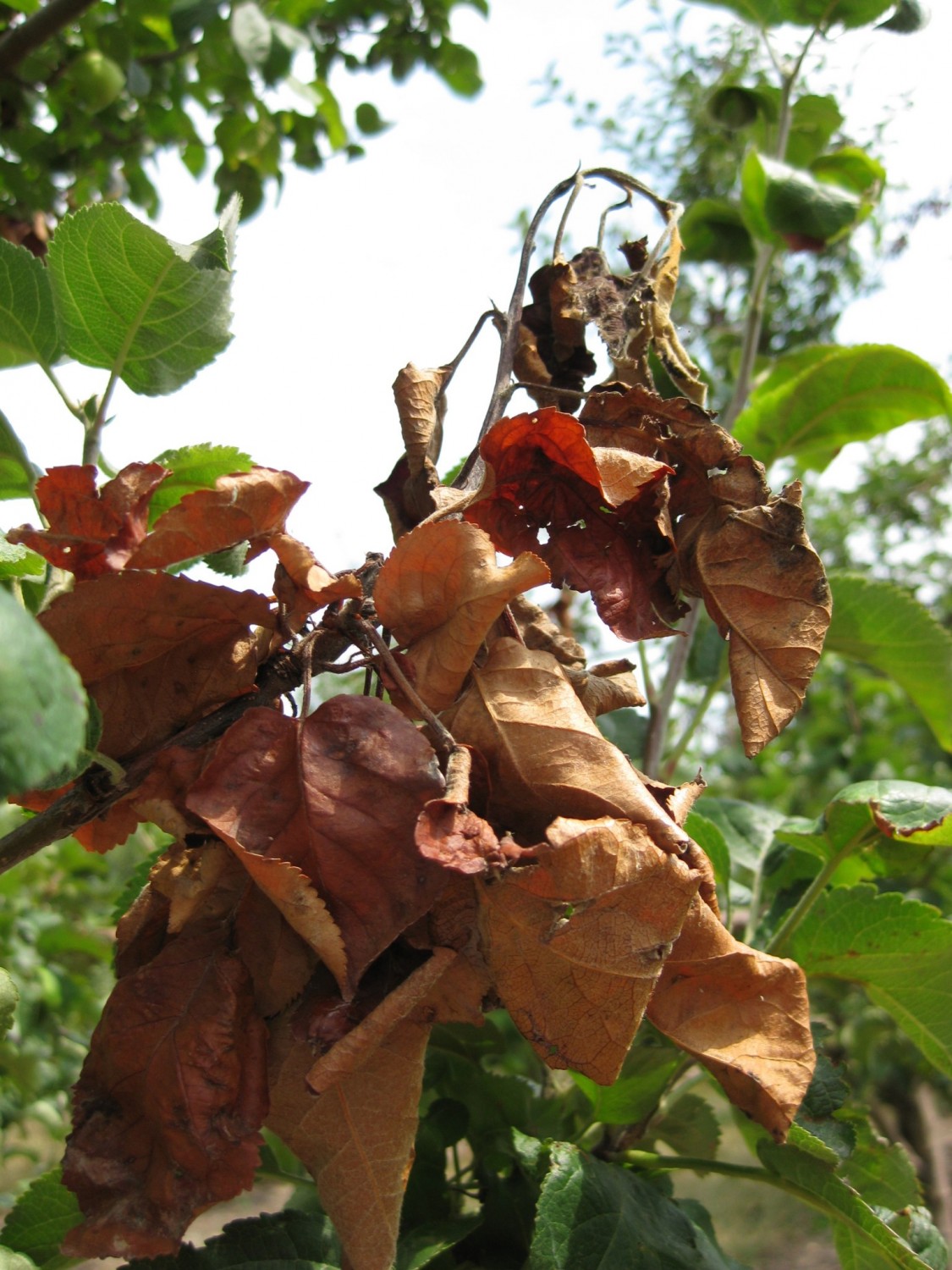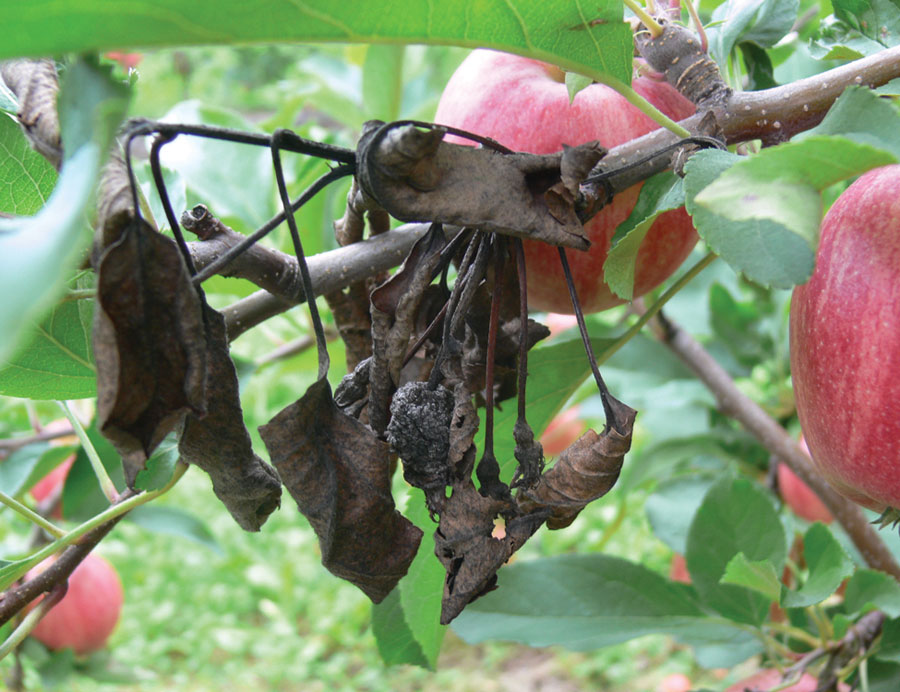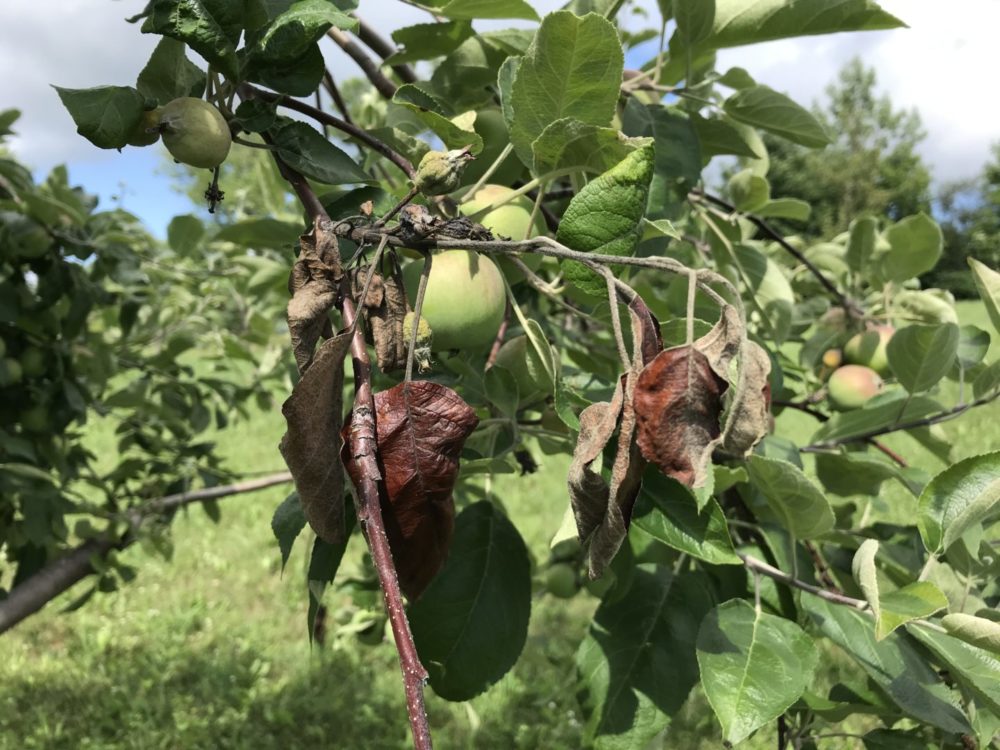
Avoid excessive application of fertilizer that may promote overly lush growth. May also use “ugly stub” method of pruning. Prune all marked twigs and cankered branches in late winter at least 8-12 inches below the infection. Mark infected twigs with ribbon or paint during the growing season. Khan, a geneticist who studies apples and their diseases at Cornell University, nodded solemnly. But on this muggy May afternoon, it could strike at any moment. Fire blight, the bacterial nemesis of apple growers everywhere, hasn’t appeared yet this season. Plant less susceptible apple and crabapple cultivars. Pictured above: Apple trees infected with fire blight in Awais Khan’s orchard. Fireblight symptom on fruit (Bruce Watt, University of Maine, Management and other important facts Distinctive “shepherd’s crook on apple (Penn State Department of Plant Pathology & Environmental Microbiology Archives, Penn State University, )įigure 2. Slightly sunken bark cankers may appear on branches and stems.įigure 1. Fruit may turn dark and shriveled and persist on the branch. Leaves on infected shoots turn brown as if scorched by fire. Young shoots wilt and droop, forming a distinctive “shepherd’s crook.”. 6:23 10.Authors: Esther McGinnis and Kasia Kinzer Symptoms PR genes of apple: identification and expression in response to elicitors and inoculation with Erwinia amylovora. Colonization of host plants by the fire blight pathogen Erwinia amylovora marked with genes for bioluminescence and fluorescence. Spatial and temporal distribution of trunk-injected imidacloprid in apple tree canopies. D., Vandervoort C., Garavaglia T., Cregg B. “Evaluation of trunk-injected bactericides and prohexadione-calcium for environmentally friendly control of fire blight (Erwinia amylovora) in apples,” in Proceedings of the VII Congress on Plant Protection: Integrated Plant Protection – a Knowledge-Based Step towards Sustainable Agriculture, Forestry and Landscape Architecture, Zlatibor. PR genes SAR induction acibenzolar-S-methyl antibiotics apple disease control fire blight potassium phosphites trunk injection.Īćimović S. With the development of injectable formulations and optimization of doses and injection schedules, the injection of protective compounds could serve as an effective option for fire blight control. 
ASM and PH suppressed fire blight even after cessation of induced gene expression. The time separating SAR induction and fire blight symptom suppression indicated that various defensive compounds within the SAR response were synthesized and accumulated in the canopy.

Injection of both ASM and PH resulted in the significant induction of PR-1, PR-2, and PR-8 protein genes in apple leaves indicating induction of systemic acquired resistance (SAR) under field conditions. Trunk injection of oxytetracycline resulted in excellent control of shoot blight severity, suggesting that injection is a superior delivery method for this antibiotic. Overall disease suppression with streptomycin was lower than typically observed following spray applications to flowers. In field experiments, after 1-2 apple tree injections of either streptomycin, potassium phosphites (PH), or acibenzolar-S-methyl (ASM), significant reduction of blossom and shoot blight symptoms was observed compared to water injected control trees.

Trunk injection could decrease antibiotic usage in the open environment and increase the effectiveness of compounds in fire blight control. Trunk injection is a target-precise pesticide delivery method that utilizes tree xylem to distribute injected compounds. Even though successful in control, preventive antibiotic sprays also affect non-target bacteria, aiding the selection for resistance which could ultimately be transferred to the pathogen Erwinia amylovora.

Management of fire blight is complicated by limitations on use of antibiotics in agriculture, antibiotic resistance development, and limited efficacy of alternative control agents.








 0 kommentar(er)
0 kommentar(er)
